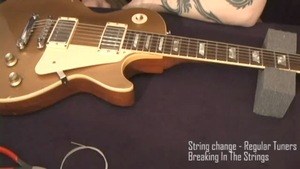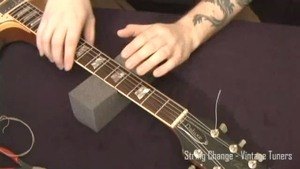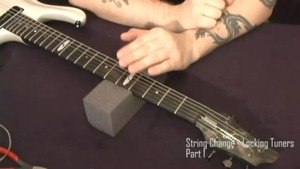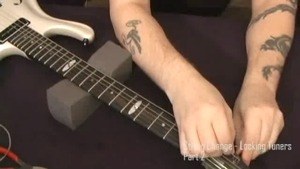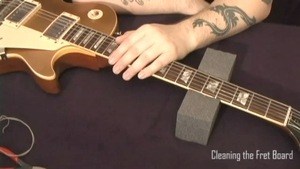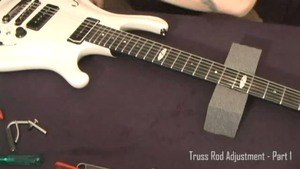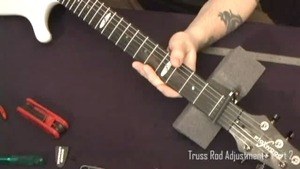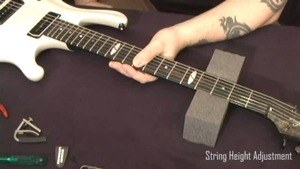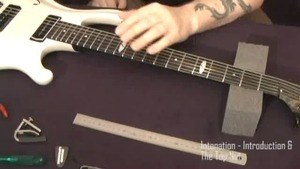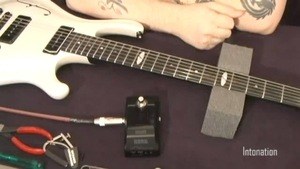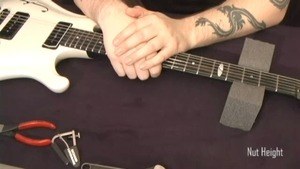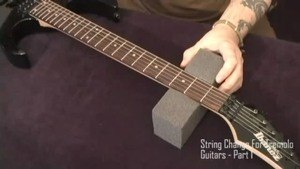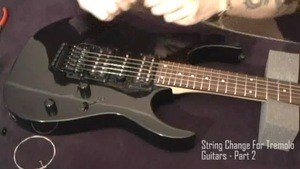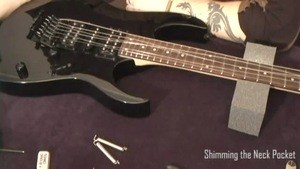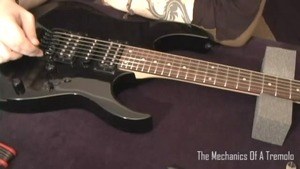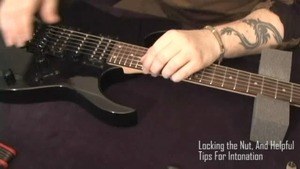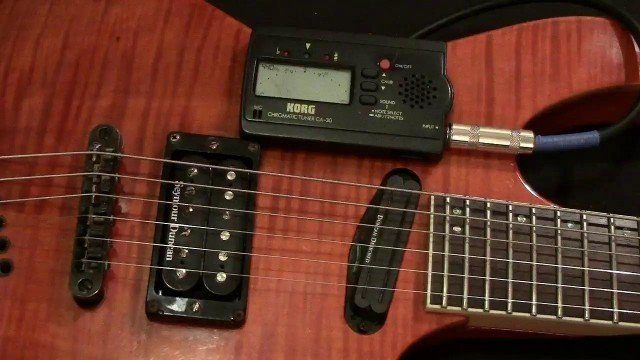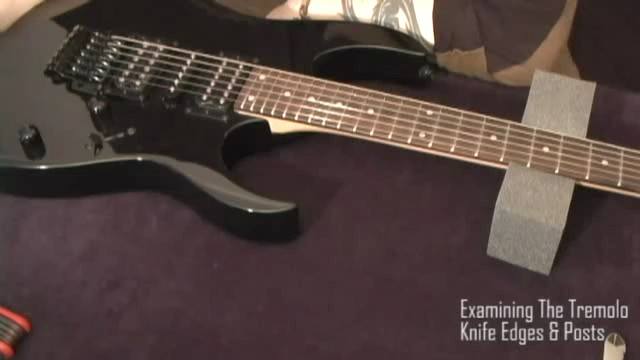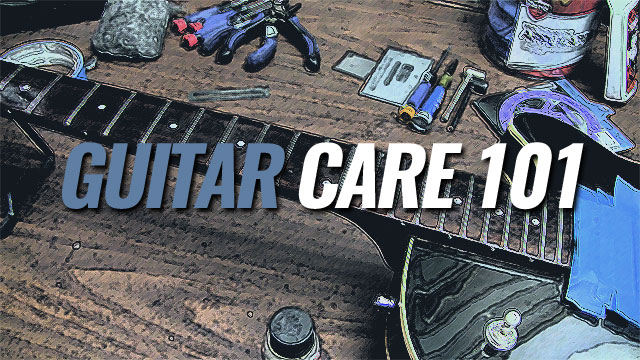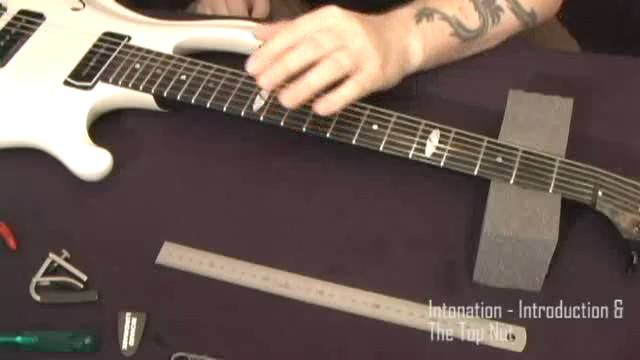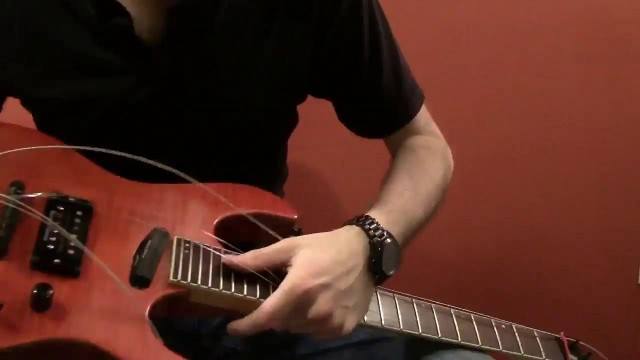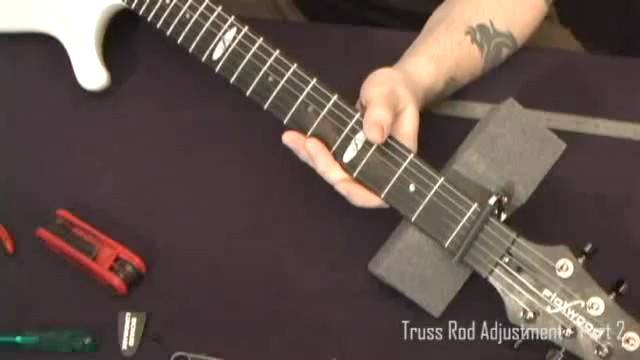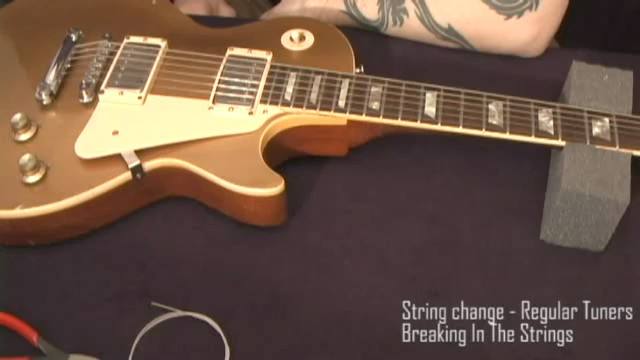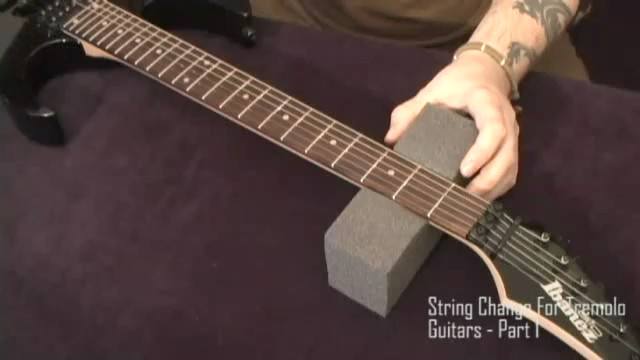Ok, let’s say that your top nut is fine. Then let’s move on to intonating to rest of the neck.
The common way of intonating an electric guitar is to tune the open harmonic to pitch, and then check to see if the fretted note at the 12th fret is exactly in unison with that. Here you should use an accurate tuner, or computer tuner. Also, make very sure to use your ear as well, since you might be able to discern differences that your tuner does not pick up clearly.
So here we go:
1. Tune the 12th fret harmonic to pitch, check the fretted note at the 12th fret against that.
2. If the fretted note is lower than the harmonic, you must move the saddle at the bridge towards the neck. Move it in small increment, using a screwdriver. (if you have a Floyd Rose Tremolo, check that section).
3. If the fretted note is higher than the harmonic, you must move the saddle away from the bridge.
4. Check again and again, until the two notes are the same.
It should be noted that as well as relied and string height, string gauge also affect intonation. Thicker strings will have the saddles moved further back from the neck than thinner strings. Thus, if you change to thicker string, with all else being equal, your entire guitar will intonate a bit low in the upper register.
Another thing I always do is to check the intonation between the 3rd and the 15th fret. I tune the open string to pitch, then check this way. Many times, the 15th fret might come up a little low, even though the 12th fret harmonic/12 fretted looks fine. Then I try to go more by the 3rd-15th intonation. Why? Because an open harmonic contains many overtones that mask the tone you’re after. Secondly, it is the fretted notes you’re after, and those you primarily want to be sure intonate correctly when soloing.
Yet another thing you want to keep in mind is that new string will sound better than old ones. Is this because they intonate better? No, actually not. It is because new string produce a series of overtones that covers up the actual string tone, and “hides” it away, and thus masks the fact that the guitar isn’t really intonating as well as it should. Solution? Change strings more often. BUT, ALWAYS play in the strings before intonating them, letting them stretch completely.
The “inharmonicity” of new strings are greater than older ones, and also greater with thicker strings than thinner. This is one reason why thinner strings intonate better than thicker. This is also why pianos with their thicker strings is taut more, and longer to allow the over tone series to be more in tune. This is of minor consequence on a guitar though, but I thought the physics of the thing would be well worth knowing.



